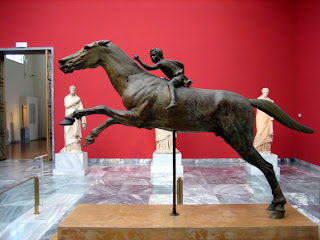ROMANTICISM ART

Romantic period was an artistic, literary, musical and intellectual movement that originated in Europe toward the end of the 18th century, and was at its peak in the approximate period from 1800 to 1850. With its emphasis on the imagination and emotion, Romanticism emerged as a response to the disillusionment with the Enlightenment values of reason and order in the aftermath of the French Revolution of 1789. In Romantic art, nature – with its uncontrollable power, unpredictability, and potential for cataclysmic extremes – offered an alternative to the ordered world of Enlightenment thought. The movement emphasized intense emotion as an authentic source of aesthetic experience, placing new emphasis on such emotions as apprehension, horror and terror, and awe – especially that experienced in confronting the new aesthetic categories of the sublimity and beauty of nature. In 1808, Spanish painter Francisco Goya ...








